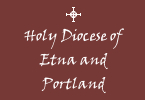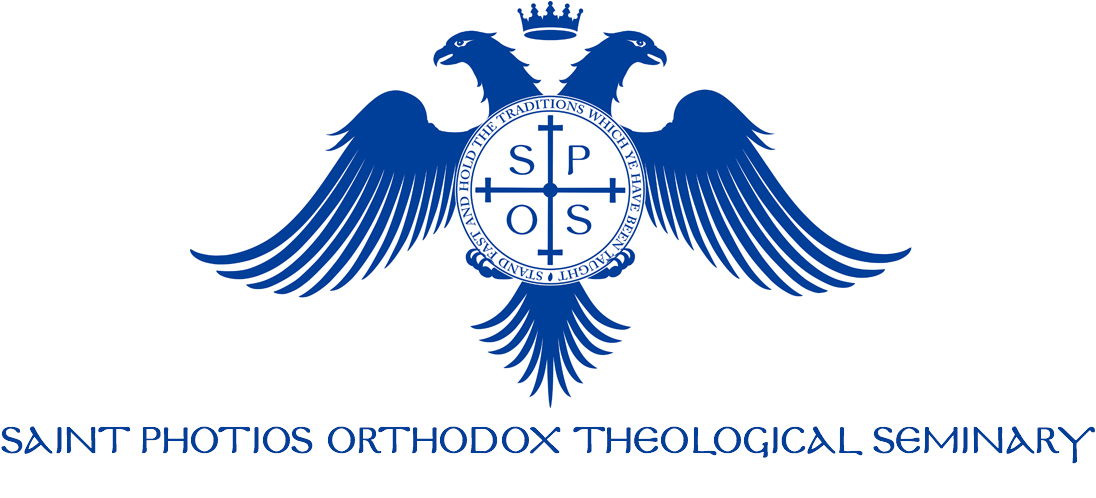Timely Lessons from the Life of St. Mary of Egypt
- Details
- Created on Tuesday, 07 April 2020 16:55

Church of the Genuine Orthodox Christians of Greece
This year, we are all traversing the season of Great Lent under extraordinary circumstances owing to the coronavirus pandemic. The feast day of St. Mary of Egypt always provides us with lessons, but this year in particular it gives us courage and strength to make the most of the present situation, so that we will emerge from it not only without damage to our mental health, but even reaping numerous spiritual benefits.
The Holy Apostle Paul and St. James the Brother of the Lord guide us in this direction: “...we glory in tribulations also, knowing that tribulation worketh patience; and patience, experience; and experience, hope; and hope maketh not ashamed” (Romans 5: 3-4); and “Blessed is the man that endureth temptation; for when he is tried, he shall receive the crown of life, which the Lord hath promised to them that love Him” (St. James 1:12). Let us now examine how today’s feast teaches us to make use of the present difficult circumstances for our spiritual benefit.
1. Even though Abba Zosimas had attained to great virtue and spiritual gifts, he was still in need of further instruction and perfection, which is why God, so as to teach him humble-mindedness, directed him to the Monastery of St. John the Baptist by the Jordan River. If even St. Zosimas, who had reached such heights of virtue that he was vouchsafed divine revelations, was in need of instruction and guidance, how should we Christians of today’s era feel—we who, having just left off our heavy sins and drawn closer to the Church, imagine that we should become teachers of the entire world? The Internet and blogs today are filled with such self-appointed “enlighteners.” Those who until yesterday were treading the path of iniquity, today want to teach us Orthodoxy, while remaining ignorant of the rudiments of our faith. Brothers and sisters, stay away from such people and what they write.
2. At the Monastery of St. John the Baptist, Abba Zosimas came to know virtuous monks who had the holy custom of departing from the monastery at the outset of Great Lent to live in the desert in seclusion, without associating with others, with nothing but praying and fasting. We today are also called to spend Great Lent for the most part closed up in our homes in relative seclusion. We do not have the strength to undergo exactly the same ascesis, but we can emulate it to some small extent. If we are able to do so, we will receive benefit.
3. These ascetics spent the entire Great Lent in hesychia (silence, stillness). When we speak of hesychia, we do not mean so much the absence of noise as a lack of mental distraction. It is not necessary to go out into the desert. It does not matter where we live, but how we live. We can experience this kind of hesychia when we close ourselves in our rooms to pray as our Lord teaches us: “But thou, when thou prayest, enter into thy closet, and when thou hast shut thy door, pray to thy Father which is in secret; and thy Father which seeth in secret shall reward thee openly” (St. Matthew 6:6). Let us distance ourselves a bit from the television and computer; let us leave our mobile phones outside of our room when we pray; and let us communicate with God as far as possible without distraction.
4. When St. Zosimas encountered St. Mary in the desert, he beheld her elevated a cubit from the earth as she prayed. She called him by his name, and the Abba, with respect for her holiness, asked for her blessing. At the same time, however, St. Mary prostrated herself before him, asking the blessing of St. Zosimas, since he was a Priest. “Thus they both lay on the ground, each asking the other for a blessing.” This teaches laypeople, on the one hand, to respect the Priesthood, and the clergy, on the other hand, to have respect for the virtue of laypeople and to cultivate a humble mindset.
5. After so many years in the desert, St. Mary asked the Abba with genuine interest: “How do the Christian people live these days? How about the emperors? How are the affairs of the Church tended?” The Abba limited himself to saying that Christ had bestowed peace upon all, and he asked the Saint to pray for him and the whole world. This took place during the reign of Justinian I. The Emperor Justinian and his wife Theodora lived a life that would have made prime fodder for hundreds of blogs in our own days, and the same could be said about the lives of the Christians and the ecclesiastical matters of their era, since scandals have never been absent from ecclesiastical life. But the Saints teach us not to occupy ourselves with gossiping and unnecessary words, but rather to direct our speech to that which benefits our souls.
6. St. Mary then confessed the sins of her life to Abba Zosimas, and in this way teaches us that even though she had spent forty-seven years in the desert in such great ascesis and had attained to such a measure of virtue as to be suspended in the air when she prayed and crossed the Jordan river as if on dry land, she nevertheless was in need of the Mystery of Confession. All of us, then, who possess no virtue, or at any rate are spiritual infants, how much more are we in need of this salvific Mystery?
7. After confessing her sins, St. Mary recounted the miracle that led her from the self-indulgent life of prodigality to repentance. An invisible force prevented her from entering the Church of the Resurrection in Jerusalem, where she went out of simple curiosity. As soon as she came to sincere repentance, the invisible obstacle was removed and she was able to enter the Church and venerate the Precious Cross and the Holy Sepulchre. Today, we also are prevented from common worship in our holy Churches. Let us consider that perhaps this situation is as a result of our sins.
Maybe we need to repent sincerely? Maybe we did not sufficiently appreciate our presence at Church services, and especially at the Divine Liturgy, before this tribulation? Maybe we calculated when the Liturgy would conclude so that we would arrive just before the end, some fifteen minutes before, others perhaps half an hour or an hour before? And maybe we became impatient if there was some delay or if the homily was rather long? So then, maybe we were in need of being deprived of some essential things so as to appreciate their value? These are questions we should ask ourselves. Let us show sincere repentance and the obstacles will be removed.
8. St. Mary recounts how, at the exhortation of the Mother of God, she went out into the desert to “find a place of repose,” without giving any thought as to how she would live there, but putting her full trust in God. As for us, how many times have we heard the entreaty of the celebrating Priest to call to remembrance the Theotokos and all the Saints, and to “commend ourselves and one another and our whole life unto Christ our God”? Do we have complete trust in God that He will not abandon us, but permits every tribulation, even the harshest, for the benefit of our souls?
9. While living in the desert, St. Mary was for many years warred against by thoughts; sinful recollections, mental images, and fantasies from her past, instigated by the Evil One, attempted to make her sway from her resolve to live according to God. The Saint repulsed the thoughts, despised the incitements of the Evil One, and remained steadfast in her resolve to follow a godly way of life, and thus proved that her repentance was genuine. Let us follow her example.
10. Finally, St. Mary asked Abba Zosimas to return to a spot near the Jordan River the following year with Holy Communion so that she could partake of the Immaculate Mysteries. After forty-seven years of fierce ascesis, she asked for Holy Communion not immediately, but after another entire year! Indeed, the following year St. Zosimas went to the Jordan River with a Chalice and communed the Saint. That same day, St. Mary yielded up her soul to the Lord. This teaches us the great value of the Mystery of Holy Communion, which is warred against with such vehemence in our days by atheists and is held in doubt by those of little faith. We, however, are taught to partake of the Immaculate Mysteries after appropriate preparation, following the guidance of our spiritual Father, and with firm faith that it constitutes the Immaculate Body and Precious Blood of our Lord Jesus Christ, even if it be necessary to wait a short or long time to partake as we fulfill an epitimia given us by the Lord for our own benefit. Communing of the Divine Eucharist, we become one body with Christ, as well as with our fellow Orthodox brethren, and fellow heirs of the Kingdom of God.
Through the intercessions of St. Mary of Egypt and of St. Zosimas, may we all be vouchsafed the Heavenly Kingdom, making use of every circumstance permitted by our Lord for our repentance and correction and for eternal salvation. Amen!
Translated from the Greek.
Orthodox Awareness
(Ψευδο) Προφητείας Παϊσίου το ανάγνωσμα...
Εις την εφημερίδα «Ελεύθερην Ώραν» της 6-8-2009 (ν.η.) ανγράφεται το ακόλουθον δημοσίευμα υπό τίτλον «Ο Γράψας, ο Παϊσιος και η Προφητεία!»:
«Για τον στρατηγό Δ. Γράψα υπήρχε άλλη Προφητεία. Την φοβήθηκαν.
Από καιρό κυκλοφορεί η προφητεία του γέροντα Παΐσιου… Βέβαια, άλλο προφητεία, άλλο πραγματικότητα… Αλλά, κάπου υπάρχει μία άκρη! Read more...
Missions
Saints Peter and Paul Orthodox Mission, Tucson, Arizona
Saints Peter and Paul Orthodox Church is a beautiful mission parish near downtown Tucson, a city in southern Arizona. It was started in 1997 by Father John Bockman, who was a missionary Priest formerly serving missions in Tennessee and Massachusetts since 1990. Father John served the faithful in Tucson and the surrounding area in his home Chapel until his repose in November of 2000. His wife, Presbytera Valerie, continued to make her home Chapel available for the mission, with clergy from Saint Nectarios Orthodox Church in Seattle and His Eminence, Metropolitan Moses of Toronto (then of Portland), visiting to provide the Divine Services.
Read more...Youth
2025 Youth Conference
Please join us for the 2025 youth conference in Toronto, Ontario, Canada! To learn more, visit the conference website.
Ask A Priest
Is the GOC Insular?
Q. In considering becoming part of the GOC in America, I am getting warnings from various circles that the attitude of GOC people is that of being “walled off,” “arrogant,” “judgmental,” and “in your face” toward those not in the Genuine Orthodox Church, with accusations such as “World Orthodox” priests are “not even Christians” and the like. Could you give me your personal, realistic assessment of this dynamic and possibly refer me to an official statement on how GOC members should and do relate to and communicate with those in “World Orthodoxy”? Read more...





